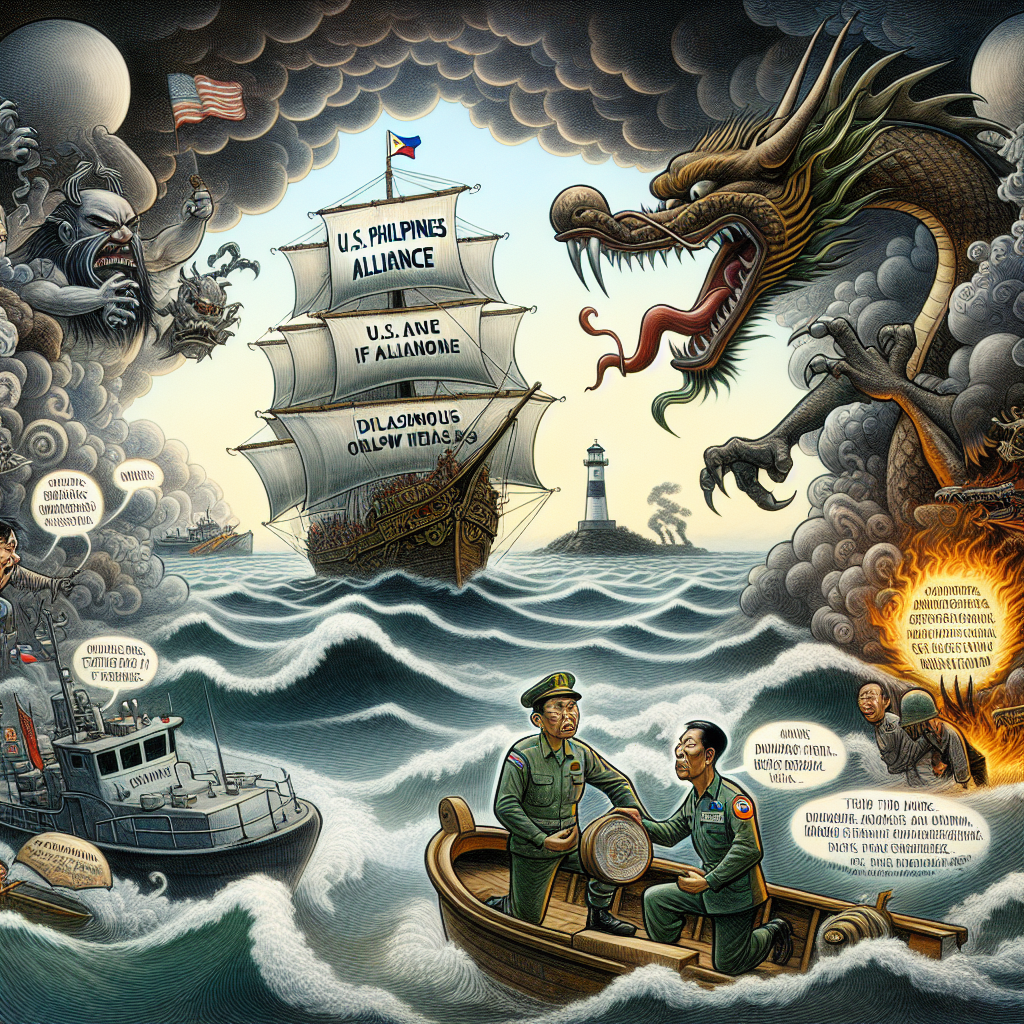By Louis ‘Barok‘ C. Biraogo
In a world fraught with geopolitical strife, the recent skirmish in the South China Sea has cast a long shadow over regional stability. The forcible boarding of Philippine navy vessels by the Chinese coast guard is a stark reminder of the volatility in these contested waters. As the United States and the Philippines seek to de-escalate the situation, one can’t help but wonder what the future holds.
In response to this brazen act, the United States and the Philippines have opted for a measured approach. Joint maritime exercises are planned, ostensibly to show support for Manila without further inflaming tensions. The location of these exercises in disputed waters underscores a delicate balance: demonstrating resolve while avoiding provocation. It’s a strategic dance on a knife’s edge, with high stakes for all involved.
The Philippines, under President Ferdinand Marcos Jr., is threading a diplomatic needle. His statements reflect a desire for dialogue rather than conflict. U.S. Deputy Secretary of State Kurt Campbell echoes this cautious stance, emphasizing support without seeking confrontation. This is a critical moment for U.S.-Philippine relations, and the decisions made now will resonate across the Indo-Pacific region.
China’s increasingly assertive posture in the South China Sea, claiming territory also contested by five other nations, is a calculated move to reshape the regional order. Beijing’s actions at the Second Thomas Shoal, ramming and boarding a Philippine vessel, are provocations designed to test the resolve of its neighbors and their allies. This incident, which left a Filipino sailor severely injured, has catalyzed calls for a robust U.S. response.
Chinese countermeasures are predictable: Beijing will continue to assert its territorial claims, likely with increased naval presence and patrols. Diplomatic channels will be flooded with rhetoric condemning perceived infringements and provocations by the Philippines and its allies. China’s strategy of incremental aggression aims to normalize its presence and sway regional perceptions in its favor.
What, then, should the United States and the Philippines do? It is imperative to maintain a united front while avoiding actions that could spiral into open conflict. The upcoming joint exercises must be conducted with utmost transparency to demonstrate peaceful intent. Simultaneously, diplomatic efforts should be intensified to build a coalition of nations committed to upholding international law and freedom of navigation.
Moreover, a robust diplomatic offensive is necessary. The U.S. and the Philippines should lead a concerted effort to bring the dispute to international forums, such as the United Nations, to highlight China’s violations of international norms. Engaging ASEAN countries and other regional stakeholders in multilateral dialogues can help create a broader consensus and reduce the risk of bilateral confrontations.
In this charged atmosphere, the rule of law must be our guiding star. The United States and the Philippines must call for adherence to international maritime laws, such as the United Nations Convention on the Law of the Sea (UNCLOS). Legal avenues, including arbitration, should be pursued to resolve disputes peacefully.
Diplomacy, however, cannot succeed in a vacuum of deterrence. The U.S. should consider more explicit assurances regarding the mutual defense treaty with the Philippines, making it clear that any lethal attack on Philippine military personnel will have serious repercussions. Enhanced military cooperation, without direct involvement in sovereignty operations like the Sierra Madre resupply missions, will help bolster Manila’s position without compromising its autonomy.
The path to peace is narrow and fraught with peril, but it is the only sustainable way forward. The U.S. and the Philippines must navigate this crisis with a firm commitment to diplomacy, peace, and the rule of law. The world watches, and the stakes could not be higher.

Louis ‘Barok‘ C. Biraogo
- Sara Duterte’s Political Tightrope: Navigating the Chasm Between Administration and Opposition

- Kris Aquino’s New Love: The Doctor Who Stole the Queen of Media’s Heart

- Waves of Resistance: International Alliance Confronts China’s Maritime Ambitions

- Naming Names: Why Pagcor Must Reveal the Ex-Cabinet Official Behind Illegal POGOs

- Future at Stake: The World Bank’s Urgent Call for Philippine Youth Investment









Leave a comment